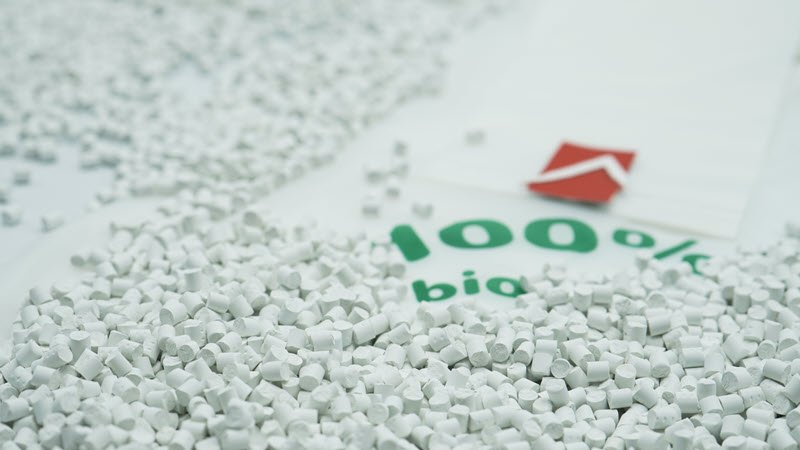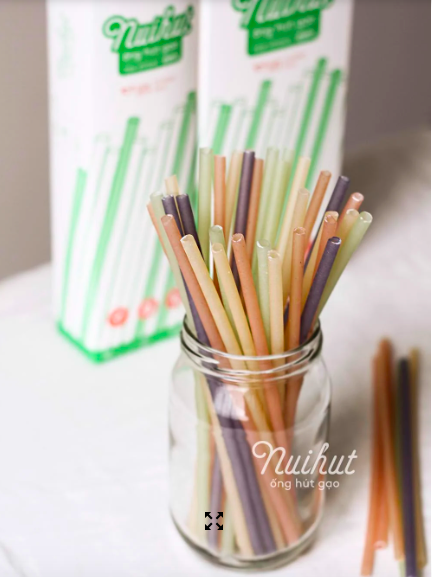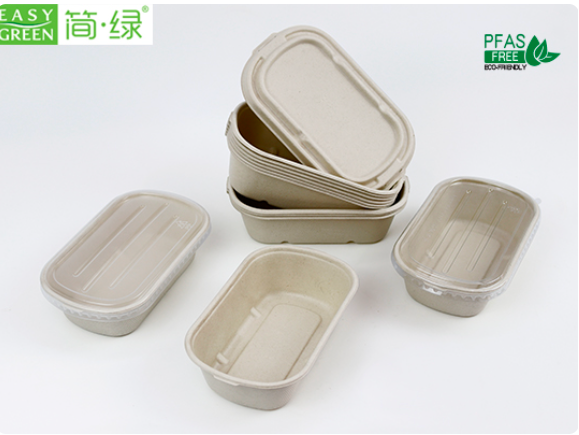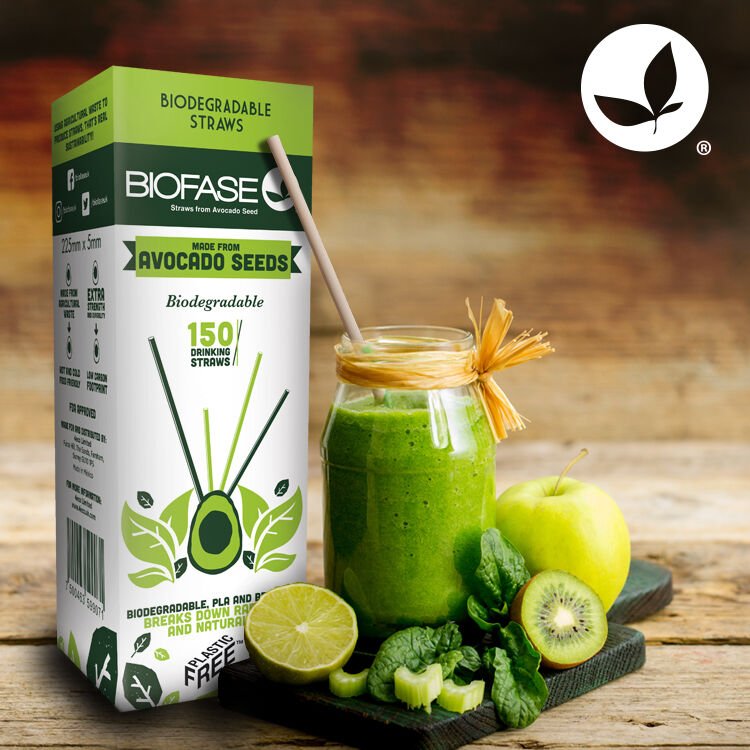
This blog post will create a bioplastic business plan in 4 steps, and offer advice on starting a bioplastic firm with success in today's competitive market. So, let's go to work on figuring out how to make a profitable business strategy for bioplastic!
1. Bioplastic market share and its potentials
Bioplastics are made from renewable resources such as cornstarch, sugarcane, and vegetable oils. They can be used to replace traditional petroleum-based plastics, which are non-biodegradable and can take up to 500 years to decompose.
The worldwide bioplastics market size is also supported by the growing awareness of the benefits associated with bioplastics. Consumers are increasingly becoming aware of the fact that bioplastics are a more sustainable and eco-friendly alternative to traditional petroleum-based plastics. As a result, more consumers are choosing bioplastics over traditional plastics.
Based on the most recent Precedence Research, the worldwide bioplastics market size was worth USD 11.2 billion in 2021 and is expected to be worth roughly USD 46.1 billion by 2030, growing at a CAGR of 17.02% between 2022 and 2030. As you may know, bioplastics are materials made from renewable resources that potentially reduce global plastic waste generation. China, along with the United States, Germany, Brazil, and Canada, is one of the top five manufacturers of bioplastics, and Vietnam is also a promising supplier in this market since billions pour into bioplastics as markets expand.
This market growth can be attributed to factors such as the increasing demand for sustainable and eco-friendly packaging solutions, government support, and the growing awareness of the benefits associated with bioplastics.
Overall, the worldwide bioplastics market size is expected to continue to grow in the coming years due to the increasing demand for more sustainable and eco-friendly packaging solutions, government initiatives to support the use of bioplastics, and the growing awareness of the benefits associated with bioplastics. This growth will continue to create opportunities for companies' bioplastics manufacturers in this market trend.
Related:
- What are bioplastics made from? Materials to make bioplastics
- What are some of the advantages and disadvantages of bioplastics
2. Steps to create a bioplastic business plan
Step 1: Do market research
It is no secret that the bioplastic market size is booming. According to a recent study by Yahoo! Finance, the industry is projected to reach a record high of $18.7 billion by 2026, and it's clear that the demand for bioplastic materials is only growing. As a business owner or investor, this could be an excellent opportunity for you to capitalise on the bioplastic market. Before diving in, however, it is essential first to do your research and understand the market. Doing market research for the bioplastic market share can help your bioplastic business plan better understand the industry, identify potential opportunities, and make better-informed decisions. Here are some tips and steps to help you get started with your market research.

Researching the market share of bioplastics can help your bioplastics business plan understand the industry better.
Understand the Market
The first step to doing market research for the bioplastic market size is to understand the market. Familiarise yourself with the different bioplastics types, properties, and applications. It is also essential to understand the different types of producers in the industry, their production capabilities, and the types of products they offer.
Identify Market Segments
Once you understand the bioplastic market, the next step is identifying the different market segments. These can include different types of products, customer segments, and geographic areas. You can use market segmentation to understand customer needs better, identify potential opportunities, and develop targeted strategies.
Analyze the Competition
It is also essential to analyse your competition in the bioplastic market. This can include understanding their strategies, products, and pricing. This will help you better understand the market and how your own business can better compete.
Understand the Regulations
When doing bioplastic market research, it is also essential to understand the regulations and standards in the industry. This can include understanding chemical regulations, product specifications, and labelling requirements. Understanding these regulations and standards is vital to ensure your business is compliant.
Conduct Market Surveys
Conducting market surveys is also a great way to get feedback on the bioplastic market. This can include surveys of customers, suppliers, and other stakeholders. These surveys can provide valuable insights and help you better understand the market.
Discover your USP (unique selling point)
Think about all the other bioplastic suppliers; why should a consumer select you? Discovering what makes you different from the competition is crucial. This might be anything from your logo and tagline to your company's environmental ethos or your commitment to preserving the planet.

Identifying your USP (unique selling point) or what sets you apart from the other companies in your industry is essential.
Step 2: Build perfect business strategies
The following stage in completing your business plan in the bioplastic industry is to develop excellent business strategies.
Research and develop product formulas or designs for bioplastic products based on potential customer needs.
Research the current available bioplastic products' appearance, including what product sizes and colors are used, who is designing them, and what the future demand looks like. This will help you develop a successful strategy that meets customer needs.
Create the right budget plan.
Second, remember that creating a budget plan for your bioplastic products business can help you stay organise and on track financially. Identifying your goals and objectives, evaluating your income and expenses, and planning how you will use your resources to succeed are essential. To get started, start by listing all of your income sources and expenses. This will help you determine where to allocate your funds and how much you can spend. Make sure to factor in variable expenses such as marketing costs, research and development, and other miscellaneous fees.
Smart marketing strategies
An intelligent marketing plan for your bioplastic business is essential for success. To ensure maximum impact, it is crucial to tailor your strategy specifically to your target audience.
Start by focusing on increasing your product’s visibility. Take advantage of online marketing tools such as SEO, social media, and email marketing to reach your target audience. Additionally, consider using traditional marketing methods like radio, television, and print. Next, consider how you can best monetize your bioplastic products. You might try to boost consumer loyalty and repeat purchases by concentrating on subscription models. You may also want to look into techniques to reward customer referrals.

Marketing is key in this industry since it allows you to reach more potential clients.
Step 3: Understand plastic logistics and the plastic supply chain
As a business person, it's essential to understand bioplastic products' plastic logistics and supply chain. Bioplastic products are a sustainable and eco-friendly alternative to traditional plastic products, but they require a unique approach to the logistics and supply chain process. By learning the ins and outs of the plastic logistics and plastic supply chain process for bioplastic products, you'll be able to make informed decisions that can help you reduce your environmental footprint. From understanding the various types of bioplastic materials available to the packaging, transportation, and storage requirements for bioplastics, you'll have the knowledge you need to make the best decisions for your business and the environment.

Understanding the plastic logistics and supply chain of bioplastic goods is vital.
The bioplastics supply chain starts with the sourcing of raw materials, followed by the manufacturing process, and then the distribution and disposal of the bioplastics.
Although the principles behind plastic logistics and the bioplastic supply chain are relatively simple, the complexity of the products and the process can be overwhelming. For instance, plastic products often require specialised packaging, storage, and shipping.
Furthermore, bioplastics can be particularly challenging when distributing products to retailers or consumers.
For businesses, understanding plastic logistics and the bioplastic supply chain is essential for creating a successful business strategy. Companies must ensure that their plastic products are delivered safely, efficiently, and cost-effectively.
Additionally, companies should be aware of the environmental impacts of their production and distribution processes.
Step 4: Find a reliable raw material supplier
Finding the right raw material supplier for your bioplastic products is essential to manufacturing. Bioplastic is a unique material that provides a sustainable and eco-friendly solution for many products, and it’s vital to source the right supplier to ensure the highest quality of your bioplastic products.
When searching for a reliable raw material supplier for your bioplastic products, there are a few key factors to consider. Firstly, you should make sure that the supplier is reputable and has experience in the bioplastic field. It’s also essential to assess their pricing and quality and any other services or benefits they may offer.
One of the most important aspects is their ability to meet your needs. You should check their delivery times and whether they have the necessary expertise to fulfil your order. Also, you should make sure that they offer a range of bioplastic products from which to choose, so you can access various options to suit your needs.

Find the proper provider to ensure the most excellent quality of your bioplastic goods.
To find a reliable raw material supplier for your bioplastic products, it’s essential to do your research. You can start by searching online for reviews of different suppliers and contacting their customer service departments to ask any questions you may have. You can also visit trade shows and exhibitions to learn more about the suppliers and their products.
At EuP, we understand that finding the right supplier is integral to manufacturing. That’s why we take pride in providing reliable raw material suppliers that offer high-quality products at competitive prices. Our experienced team is dedicated to providing superior customer service and ensuring our clients are fully satisfied.
We also make sure that our suppliers are up-to-date with the latest technology and have access to the most advanced materials. All our suppliers have been thoroughly tested to ensure they meet our standards and provide the best quality bioplastic products. If you’re looking for a reliable raw material supplier for your bioplastic products, look no further than EuP. We are dedicated to providing excellent customer service and helping you find the right supplier to meet your needs. Contact us today to get started!
3. Case studies of successful bioplastic business
Here are some common case studies of successful bioplastic businesses to help you learn more about this promising sector.
3.1. Nuihut
https://nuihut.com/
NUIHUT is well-known for its 100% biodegradable rice straw brand, which is made from natural and unique plant sources. NUIHUT's rice straws are colourless and odourless, allowing consumers to enjoy the flavour of their drinks while also contributing to environmental sustainability.
Furthermore, NuiHut was founded to switch people's behaviours from using plastic straws to consuming rice straws, hence providing consumers with health advantagesand reducing adverse environmental consequences.

3.2. Easy Green
https://www.easyngreen.com/
The founders of Easy Green Eco Packaging Co., Ltd. saw a need for safe, environmentally friendly disposable food packaging and therefore established the company in 2003.
Easy Green features two items derived from cornstarch: the salad soup dish and the food containers. They are convenient for quick meals, salads, desserts, soup, snacks, and so on. The products are stackable, making them excellent for short-distance travelling. In addition, these items have a high resistance to temperatures of 100°C, making them suitable for use in both the microwave and the refrigerator (down to about -10°C.). The quality control system, in line with ISO standards, guarantees consistency and reliability.
Easy Green now has global reach thanks to its global exports.

3.3. 4Eco
https://4eco.uk.com/

4eco Limited distributes alternatives to plastic derived from agricultural byproducts and other non-fossil fuel based materials. Avocado seed straws and cutlery are their primary products. In the United Kingdom, 4Eco is the exclusive distributor of Biofase.Their proprietary process extracts the biopolymer from avocado seeds, which is considered an agroindustrial waste product. The biodegradability of 4Eco's goods makes them stand out from the competition.